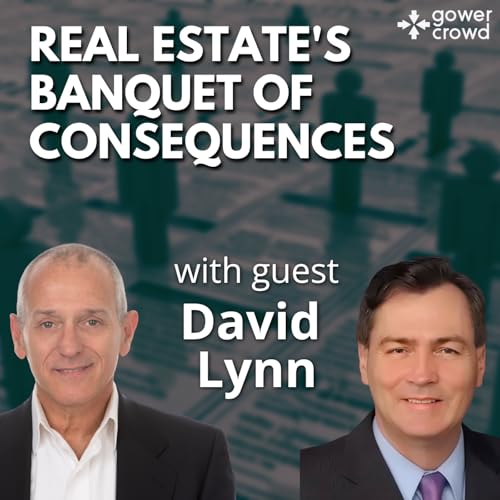My guest today is David Lynn, PhD — CEO of Unity Investment Management, a private-equity real-estate firm with nearly $1 billion AUM across 74 medical outpatient buildings nationwide. A London School of Economics PhD and MIT MBA, David cuts through macro confusion with a steady, data-driven view of where capital and demographics are really pulling the market.
Driving Thesis:
America's aging population and the rise of personalized medicine, longevity science, and AI diagnostics are reshaping health-care real estate. Telehealth doesn't kill in-person visits — it creates more of them. And as construction costs rise and MOB supply stays tight, low-beta sectors like medical outpatient buildings are poised to outperform high-volatility multifamily and office assets.
Why it matters:
We're entering a post-banquet cycle — after 15 years of ultra-cheap debt and compressed cap rates. David argues that the "easy-money era" is over, but patient investors still win through cash-flow discipline and blend-and-extend lender relationships. Medical tenants are non-discretionary and financially stable; that stability will anchor returns as rates ease and capital markets thaw.
Five questions David answers:
-
Why MOBs held their value while multifamily stumbled.
-
How telemedicine actually drives physical visits.
-
What AI and genomics mean for future space demand.
-
Where we are in the cap-rate cycle (and why this may be the bottom).
-
How tariffs, immigration, and Fed policy feed through to CRE pricing.
Takeaways for sponsors & LPs:
• Favor low-volatility sectors with durable cash flow.
• Shorter leases can beat inflation without adding risk.
• Blend and extend — don't panic-sell distress.
• Watch employment and energy as deflationary signals.
• AI and aging will drive demand more than interest rates.
If you believe steady beats speculative, this episode maps how to navigate the new cycle with a scientist-investor's lens — one rooted in data, discipline, and durable demand. David Lynn is that rare voice who bridges macro economics and boots-on-the-ground real estate with clarity and calm.
*** In this series, I cut through the noise to examine how shifting macroeconomic forces and rising geopolitical risk are reshaping real estate investing. With insights from economists, academics, and seasoned professionals, this show helps investors respond to market uncertainty with clarity, discipline, and a focus on downside protection. Subscribe to my free newsletter for timely updates, insights, and tools to help you navigate today's volatile real estate landscape. You'll get: - Straight talk on what happens when confidence meets correction - no hype, no spin, no fluff.
- Real implications of macro trends for investors and sponsors with actionable guidance.
- Insights from real estate professionals who've been through it all before.
Visit GowerCrowd.com/subscribe
Email: adam@gowercrowd.com
Call: 213-761-1000
 Dec 2 202555 m
Dec 2 202555 m Nov 25 202558 m
Nov 25 202558 m Nov 18 202553 m
Nov 18 202553 m Nov 12 20251 h y 1 m
Nov 12 20251 h y 1 m Nov 4 202543 m
Nov 4 202543 m Oct 29 202549 m
Oct 29 202549 m Oct 23 202557 m
Oct 23 202557 m Oct 15 202559 m
Oct 15 202559 m
